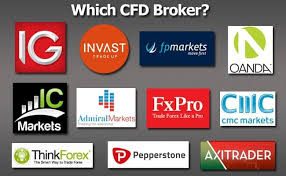Exploring the Best CFD Trading Markets A Comprehensive Guide

When it comes to finding best cfd trading markets bestbrokercfd.com the best CFD trading markets, there’s a myriad of options to consider. Contract for Difference (CFD) trading allows individuals and institutions to speculate on the price movements of various assets without owning the underlying assets. This flexibility can lead to profitable trading experiences, but it also comes with its own set of complexities and risks. In this comprehensive guide, we’ll explore some of the best CFD trading markets, the assets you can trade, and essential strategies to maximize your success. Whether you’re a novice trader or an experienced investor, this article will provide valuable insights to help you navigate the world of CFD trading.
Understanding CFD Trading
CFD trading has grown in popularity over the years due to its potential for high returns and the variety of markets available. Essentially, a CFD is a contract between a trader and a broker stipulating that one party will pay the other the difference in the asset’s current value and its value at contract initiation. This means traders can speculate on both rising and falling prices, providing an opportunity for profit regardless of market conditions.
Key Benefits of CFD Trading
- Leverage: CFDs are traded on margin, meaning you can control a larger position with a relatively small initial investment.
- Diverse Markets: With CFDs, you can trade a wide range of assets, including stocks, indices, commodities, currencies, and cryptocurrencies.
- Flexible Trading Hours: Many CFD markets operate 24/5, allowing traders to capitalize on global market events.
- Ability to Short: CFD trading allows you to profit from falling markets by ‘shorting’ an asset.
Best CFD Trading Markets
There are several key markets that stand out when considering the best CFD trading opportunities. Here are the most popular options:
1. Forex Markets
The foreign exchange market (Forex) is the largest market in the world, with a daily trading volume exceeding $6 trillion. Trading CFDs on major currency pairs like EUR/USD, GBP/USD, and USD/JPY can provide substantial opportunities for profit. Forex trading is highly liquid and allows traders to leverage their positions significantly. However, it’s essential to understand currency movements and geopolitical factors that can influence prices.
2. Stock CFDs
Trading CFDs on individual stocks allows traders to speculate on perceived value. Major companies like Apple, Amazon, and Tesla offer great CFD trading opportunities. Trading stock CFDs can be particularly attractive as it allows you to trade without owning shares, potentially benefiting from price movements in both directions.
3. Indices CFDs
Indices CFDs track the performance of a basket of stocks and can reflect broader market trends. Popular indices include the S&P 500, FTSE 100, and NASDAQ. By trading indices, you can diversify your investments and mitigate some of the risks associated with individual stocks.
4. Commodity CFDs

Commodities like gold, oil, and agricultural products are popular CFD trading markets. Commodity prices can be highly volatile, influenced by supply and demand dynamics, geopolitical tensions, and economic reports. Trading commodity CFDs is a great way to hedge against inflation or economic downturns.
5. Cryptocurrency CFDs
The rise of cryptocurrencies has opened a new frontier in CFD trading. Traders can speculate on the price of digital currencies like Bitcoin, Ethereum, and Litecoin without having to hold the actual cryptocurrency. The cryptocurrency market is notoriously volatile, so understanding market factors is crucial for successful trading.
Strategies for Successful CFD Trading
While understanding the markets is critical, having a well-defined trading strategy is equally important. Here are some strategies to consider:
1. Risk Management
One of the most important aspects of trading is managing risk. Always use stop-loss orders to protect your capital and establish clear entry and exit points for your trades. Additionally, avoid risking more than a small percentage of your trading capital on any single trade.
2. Technical Analysis
Understanding charts, indicators, and patterns can help you predict future price movements. Utilizing tools like Moving Averages, Relative Strength Index (RSI), and Fibonacci retracement can provide insight into potential trades.
3. Fundamental Analysis
Keeping an eye on economic indicators, news releases, and global events is vital for trading success. Positive or negative news can dramatically influence market movements, so it’s important to stay informed and adjust your trading strategy accordingly.
4. Demo Trading
If you’re new to CFD trading, consider using a demo trading account to practice your strategies without risking real money. This will help you familiarize yourself with the platform and monitor your trading behavior before entering the live market.
Conclusion
CFD trading offers a diverse range of markets, each with its own set of opportunities and challenges. By understanding the various assets available and employing effective strategies, traders can maximize their chances of success. Whether you’re interested in forex, stocks, indices, commodities, or cryptocurrencies, choosing the right CFD broker and market can set the foundation for profitable trades. As always, ensure you conduct thorough research and continuously improve your trading skills to navigate the ever-changing CFD landscape.
